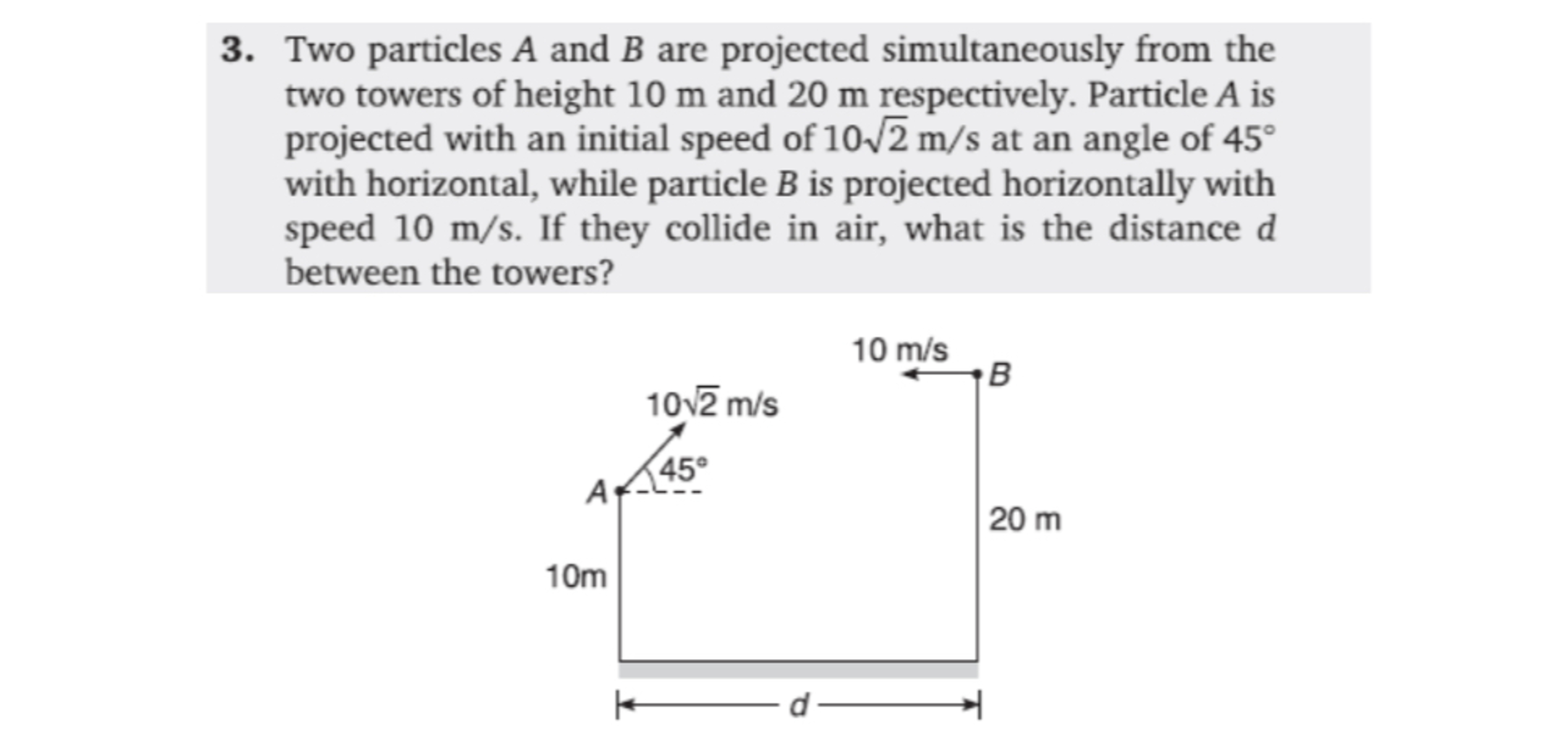This section requires Javascript.
You are seeing this because something didn't load right. We suggest you, (a) try
refreshing the page, (b) enabling javascript if it is disabled on your browser and,
finally, (c)
loading the
non-javascript version of this page
. We're sorry about the hassle.
2 solutions
I ignored gravity since the question didn't mention it, but I guess it works either way since the -5t^2 terms cancel each other.
We know the initial velocities of points A and B are as follows:
v A , i = 1 0 i + 1 0 j
v B , i = 0 i − 1 0 j = − 1 0 j
The only requirement given in the problem is that the points must collide in air, meaning that they will collide in the x direction at the same point.
So, since we know that both particles are traveling toward each other at the same speed, 1 0 m/s , then they will travel toward the center of d at the same speed; this means that they must meet at x = 2 1 d .
Now, the only thing we need to find is the horizontal distance of d .
We know that they'll both reach x = 2 1 d at the same time, so the equations of motion for each of the particles will have the same value for t , time, and the same value for x f , which is 2 1 d .
Using: x f = x i + v i t for each of the individual particles, we can solve for the t value they share in common.
For particle A:
2 1 d = 0 + 1 0 t = 1 0 t
For particle B:
2 1 d = 2 0 − 1 0 t
So, setting these equal to each other gives the following equation, from which we can solve for t:
1 0 t = 2 0 − 1 0 t
→ 2 0 t = 2 0
→ t = 1
So, now that we know that t = 1 , we can solve for the value of d from either of the equations of motion above.
2 1 d = 1 0 t = 1 0 ∗ 1 = 1 0
→ d = 2 0
So, the distance d between the towers is 20 meters .
Thank you, nice solution.

Let the lower left corner be the origin. The x and y equations for the collision at time t are:
1 0 t = d − 1 0 t 1 0 + 1 0 t − 5 t 2 = 2 0 − 5 t 2
Solving these results in ( t , d ) = ( 1 , 2 0 )